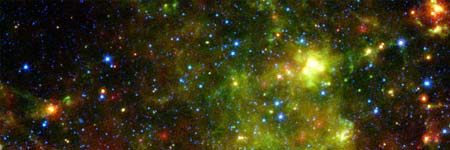If we are unable to obtain the amount we need by the time we need it, on the first, then we will continue to leave the site up in the future as an archive reference site for everyone to use as they need it. Given the amount remaining to meet by the first, its a real possibility that we might have to do that beginning next week, so please do what you can.
If you feel you can afford it and would like to contribute to keeping us on the net, than please use the pay pal button off to the right of the blog.
Vatic Note: While I do have a problem with NASA since it was put under our US Navy, I still believe there are some basics truths that have to be admitted by NASA because there are too many scientists who have studied these things and written about them, so its impossible for them and other known subjects in cosmos physics to be hidden and this may well be one of them.
so.....We really do have more within us than the limited view we have always had. Its also a good foundation for other subjects of a similar nature. It also explains why they need to depopulate us in order to keep themselves safe. We are way more than they have led us to believe. Michael Tsarion was right, "we are marvelous creatures, living ordinary lives".
Are we really all made of stardust?
http://www.physics.org/article-questions.asp?id=52
by Admin, Physics.org,
We are all made of stardust. It sounds like a line from a poem, but there is some solid science behind this statement too: almost every element on Earth was formed at the heart of a star.
Next time you’re out gazing at stars twinkling in the night sky, spare a thought for the tumultuous reactions they play host to. It’s easy to forget that stars owe their light to the energy released by nuclear fusion reactions at their cores. These are the very same reactions which created chemical elements like carbon or iron - the building blocks which make up the world around us.
After the Big Bang, tiny particles bound together to form hydrogen and helium. As time went on, young stars formed when clouds of gas and dust gathered under the effect of gravity, heating up as they became denser. At the stars’ cores, bathed in temperatures of over 10 million degrees C, hydrogen and then helium nuclei fused to form heavier elements.
A reaction known as nucleosynthesis.
This reaction continues in stars today as lighter elements are converted into heavier ones. Relatively young stars like our Sun convert hydrogen to produce helium, just like the first stars of our universe.
Once they run out of hydrogen, they begin to transform helium into beryllium and carbon. As these heavier nuclei are produced, they too are burnt inside stars to synthesise heavier and heavier elements. Different sized stars play host to different fusion reactions, eventually forming everything from oxygen to iron.
During a supernova, when a massive star explodes at the end of its life, the resulting high energy environment enables the creation of some of the heaviest elements including iron and nickel. The explosion also disperses the different elements across the universe, scattering the stardust which now makes up planets including Earth.
Find more sites about stars with physics.org

Supernova remnant. Image credit: NASA
The article is reproduced in accordance with Section 107 of title 17 of the Copyright Law of the United States relating to fair-use and is for the purposes of criticism, comment, news reporting, teaching, scholarship, and research.

No comments:
Post a Comment